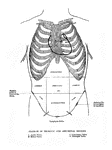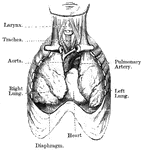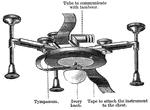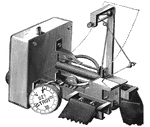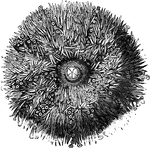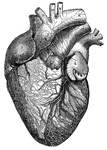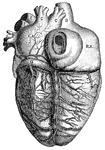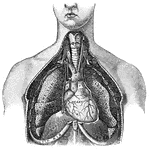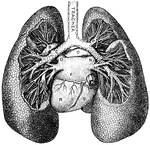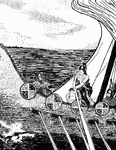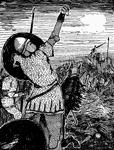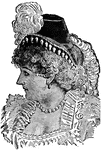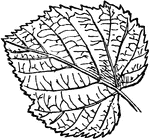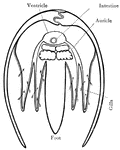
Clam
Cross section of the body of a clam, through the heart. Arrows indicate water current through the gills.

Clam
Anatomy of a bivalve clam. (ss) respiratory tubes; (aa) muscles by which the shell is closed (b) gills;…
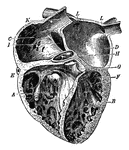
Heart
The heart is the organ that propels the blood and causes it to circulate through the arteries, veins,…
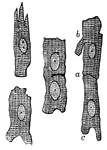
Heart Muscle
The muscular fibres of the heart, unlike those of most involuntary muscles, are striated.

Blood Circulation
The blood is made to circulate within the system of closed tubes in which it is contained by means of…
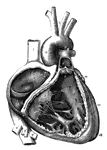
Human Heart
The interior of the heart is divided longitudinal into the right and left sections. Each right and left…

Human Heart
1 Right pulmonary veins; 1' Cavity of the auricle; 2 Wall of the auricle; 3,3' Walls of the ventricle;…

Ventricle
The right ventricle is in the shape of a crescent moon and the left ventricle is in the shape of a circle.
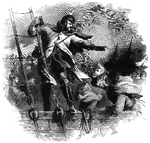
Burnside Expedition
"Burnside Expedition- the fleet and transports off Hatteras during the storm- the general giving orders.…

Battle of Mill Spring
"Battle of Mill Spring, on the Cumberland River, near Jamestown, between a confederate force, 8,000…
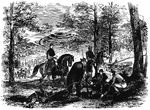
Battle of Corrick's Ford
"Battle of Carrick's Ford, Western Virginia- discovery of the body of General Garnett, by Major Gordon…
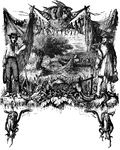
Pisces
"A fish may be defined as a Vertibrate animal breathing through the medium of water, by means of branchiae,…
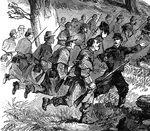
Battle of Mill Spring
"Battle of Mill Spring, on the Cumberland River, near Jamestown, between a confederate force, 8,000…
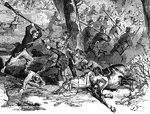
Battle of Mill Spring
"Battle of Mill Spring, on the Cumberland River, near Jamestown, between a confederate force, 8,000…

Battle of Mill Spring
"Battle of Mill Spring, on the Cumberland River, near Jamestown, between a confederate force, 8,000…
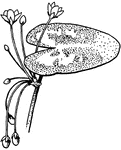
Nymphoides
Leaves small, mostly less than 15cm. long, heart-shaped; flowers white and less than 2.5cm across.

Block and Tackle
"A Block is a pulley or a system of pulleys rotating on a pintle mounted in its frame or shell with…

Intestinal absorption
"A, a fold of peritoneum; B, lacteals and lymphatic glands; C, veins of intestines;…

Lateral section of the chest
"A, a muscle which aids in pushing the food down the esophagus; B, esophagus; C,…

Cavities of the heart
"A, B, right pulmonary veins, S, openings of the left pulmonary veins; E, D, C,…
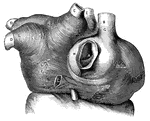
Muscular fibers of the auricle
L.A., left auricle; R.A., right auricle; A, opening of the inferior vena…

Diagram of the circulation of the blood
"R.A., right auricle; L.A., left auricle; R.V., right ventricle; L.V.,…
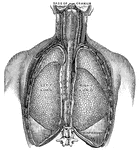
Lungs
"Relative Postion of the Lungs, the Heart, and Some of the Great Vessels belonging to the latter. A,…
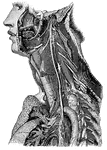
Trunk of the Pneumogastric Nerve
"Showing its distribution by its branches and ganglia to the larynx, pharynx, heart, lungs, and other…

Palmistry
"Palmistry, or Chiromancy, is the art which professes to discover the temperament and character of anyone,…
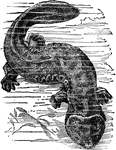
Salamander
"Salamander is a genus of reptiles closely allied to the frog, from which it differs in having an elongated…

Edward Lear
A scene from the nursery rhyme, The Nonsense of Edward Lear. There was an old man who said…

Veins and arteries
"Chief veins and arteries of the body. a, place of the heart; the veins are in black. On the right side…

Lymph Vessels
"The lymph vessels of the body. rc, the thoracic duct; lac, the lacteals taking the lymph and fatty…

Beating heart
"Diagram of the rush of blood when the heart beats. The valves v open above are closed below while the…

The lungs
"The lungs fill up most of the cavity of the chest. One lies on either side of the heart which is in…
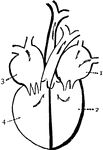
Diagram of the heart
"Diagram of the passages of the heart. 1. left auricle. 2. left ventricle, 3. Right auricle. 4. Right…

Side View of the Body
A side view of the two great cavities of the body and their organs. 1: The mouth. 2: The thorax. 3:…

Front View of the Body
The position of the organs of the mouth, thorax, and abdomen. 1, 2, and 3: Salivary glands. 4: The larynx…
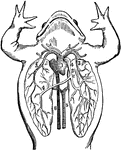
Frog
The heart and lungs of a frog. 1: Heart. 2: Arch of the aorta. 3: Pulmonary artery. 4: Pulmonary veins.…

Circulatory
1: Left ventricle of the heart. 2 and 3: Aorta. 5: Arteries that extend to the lower extremities. 6:…

Circulatory
1: Right auricle of the heart. 2 and 3: Large veins that open into the right auricle. 4: Veins of the…

Lotus Design
Very much resembles our pond lily with the exception that the color is of a brilliant purple on the…
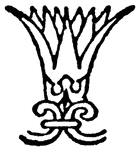
Lotus Design
Very much resembles our pond lily with the exception that the color is of a brilliant purple on the…

Lotus Design
Very much resembles our pond lily with the exception that the color is of a brilliant purple on the…
